156 results found for 'End'. Prev |1|2|3|4|5|6|7 | Next | View 100 per page
Low relevance matches: 388 other results may be of interest to you. Show low relevance matches
Forces and Moving - The way objects move depends on a variety of factors including their size and shape ACSSU073 Year 4 Biological Sciences
Animal Survival - Living things, including plants and animals, depend on each other and the environment to survive ACSSU175 Year 9 Biological Sciences
Organ Systems - Multi-cellular organisms rely on coordinated and interdependent internal systems to respond to changes to their environment ACSSU176 Year 9 Biological Sciences
Ecology - Ecosystems consist of communities of interdependent organisms and abiotic components of the environment; matter and energy flow through these systems ACSBL046 Year 11 Cells and multicellular organism
Cells as the basis of life - Movement of materials across membranes occurs via diffusion, osmosis, active transport and/or endocytosis ACSCH016 Year 11 Chemical fundamentals
Properties and structure of atoms - Trends in the observable properties of elements are evident in periods and groups in the periodic table ACSCH025 Year 11 Chemical fundamentals
Properties and structure of materials - Materials are either pure substances with distinct measurable properties (for example, melting and boiling point, reactivity, strength, density) or mixtures with properties dependent on the identity and relative amounts of the substances that make up the ACSCH030 Year 11 Chemical fundamentals
Properties and structure of materials - Ions are atoms or groups of atoms that are electrically charged due to an imbalance in the number of electrons and protons; ions are represented by formulae which include the number of constituent atoms and the charge of the ion (for example, O2–, SO42–) ACSCH032 Year 11 Chemical fundamentals
Properties and structure of materials - The characteristic properties of metals (for example, malleability, thermal conductivity, electrical conductivity) are explained by modelling metallic bonding as a regular arrangement of positive ions (cations) made stable by electrostatic forces of attra ACSCH037 Year 11 Chemical fundamentals
Chemical reactions - Endothermic and exothermic reactions can be explained in terms of the Law of Conservation of Energy and the breaking and reforming of bonds; heat energy released or absorbed can be represented in thermochemical equations ACSCH066 Year 11 Molecular interactions and reactions
Aqueous solutions and acidity - The pH scale is used to compare the levels of acidity or alkalinity of aqueous solutions; the pH is dependent on the concentration of hydrogen ions in the solution ACSCH097 Year 12 Equilibrium acids and redox reactions
Chemical equilibrium systems - Acids are substances that can act as proton (hydrogen ion) donors and can be classified as monoprotic or polyprotic depending on the number of protons donated by each molecule of the acid ACSCH102 Year 12 Equilibrium acids and redox reactions
Chemical equilibrium systems - Volumetric analysis methods involving acidbase reactions rely on the identification of an equivalence point by measuring the associated change in pH, using chemical indicators or pH meters, to reveal an observable end point ACSPH099 Year 12 Gravity and electromagnetism
Gravity and motion - Projectile motion can be analysed quantitatively by treating the horizontal and vertical components of the motion independently ACSPH100 Year 12 Gravity and electromagnetism
Gravity and motion - When an object experiences a net force of constant magnitude perpendicular to its velocity, it will undergo uniform circular motion, including circular motion on a horizontal plane and around a banked track ACSPH098 Year 12 Gravity and electromagnetism
Gravity and motion - The vector nature of the gravitational force can be used to analyse motion on inclined planes by considering the components of the gravitational force (that is, weight) parallel and perpendicular to the plane
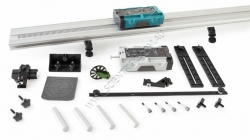
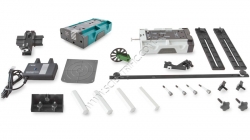
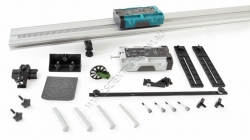
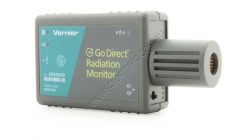
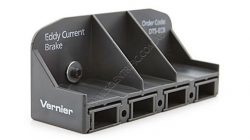
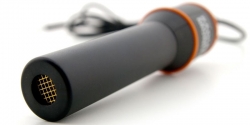
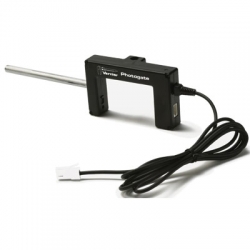
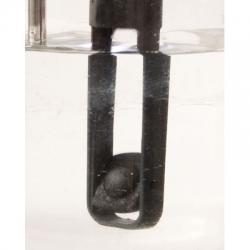
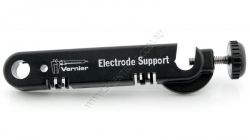

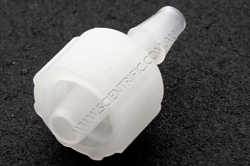
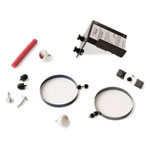
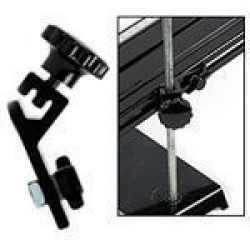
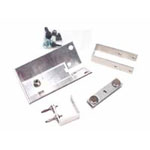

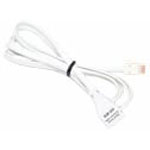
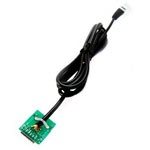


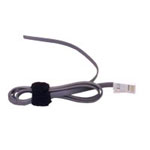
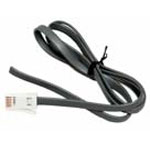
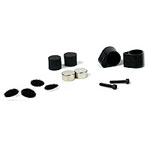
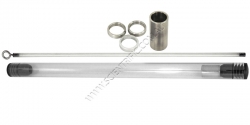

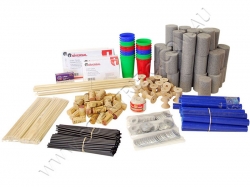
156 results found for 'End'. Prev |1|2|3|4|5|6|7 | Next | View 100 per page
Low relevance matches: 388 other results may be of interest to you. Show low relevance matches
Curriculum resources related to 'End'
ACSSU005 Foundation Physical SciencesForces and Moving - The way objects move depends on a variety of factors including their size and shape ACSSU073 Year 4 Biological Sciences
Animal Survival - Living things, including plants and animals, depend on each other and the environment to survive ACSSU175 Year 9 Biological Sciences
Organ Systems - Multi-cellular organisms rely on coordinated and interdependent internal systems to respond to changes to their environment ACSSU176 Year 9 Biological Sciences
Ecology - Ecosystems consist of communities of interdependent organisms and abiotic components of the environment; matter and energy flow through these systems ACSBL046 Year 11 Cells and multicellular organism
Cells as the basis of life - Movement of materials across membranes occurs via diffusion, osmosis, active transport and/or endocytosis ACSCH016 Year 11 Chemical fundamentals
Properties and structure of atoms - Trends in the observable properties of elements are evident in periods and groups in the periodic table ACSCH025 Year 11 Chemical fundamentals
Properties and structure of materials - Materials are either pure substances with distinct measurable properties (for example, melting and boiling point, reactivity, strength, density) or mixtures with properties dependent on the identity and relative amounts of the substances that make up the ACSCH030 Year 11 Chemical fundamentals
Properties and structure of materials - Ions are atoms or groups of atoms that are electrically charged due to an imbalance in the number of electrons and protons; ions are represented by formulae which include the number of constituent atoms and the charge of the ion (for example, O2–, SO42–) ACSCH032 Year 11 Chemical fundamentals
Properties and structure of materials - The characteristic properties of metals (for example, malleability, thermal conductivity, electrical conductivity) are explained by modelling metallic bonding as a regular arrangement of positive ions (cations) made stable by electrostatic forces of attra ACSCH037 Year 11 Chemical fundamentals
Chemical reactions - Endothermic and exothermic reactions can be explained in terms of the Law of Conservation of Energy and the breaking and reforming of bonds; heat energy released or absorbed can be represented in thermochemical equations ACSCH066 Year 11 Molecular interactions and reactions
Aqueous solutions and acidity - The pH scale is used to compare the levels of acidity or alkalinity of aqueous solutions; the pH is dependent on the concentration of hydrogen ions in the solution ACSCH097 Year 12 Equilibrium acids and redox reactions
Chemical equilibrium systems - Acids are substances that can act as proton (hydrogen ion) donors and can be classified as monoprotic or polyprotic depending on the number of protons donated by each molecule of the acid ACSCH102 Year 12 Equilibrium acids and redox reactions
Chemical equilibrium systems - Volumetric analysis methods involving acidbase reactions rely on the identification of an equivalence point by measuring the associated change in pH, using chemical indicators or pH meters, to reveal an observable end point ACSPH099 Year 12 Gravity and electromagnetism
Gravity and motion - Projectile motion can be analysed quantitatively by treating the horizontal and vertical components of the motion independently ACSPH100 Year 12 Gravity and electromagnetism
Gravity and motion - When an object experiences a net force of constant magnitude perpendicular to its velocity, it will undergo uniform circular motion, including circular motion on a horizontal plane and around a banked track ACSPH098 Year 12 Gravity and electromagnetism
Gravity and motion - The vector nature of the gravitational force can be used to analyse motion on inclined planes by considering the components of the gravitational force (that is, weight) parallel and perpendicular to the plane
Products related to 'End'

Vernier Dynamics Cart and Track System
VERNIER DYNAMICS CART AND TRACK SYSTEM
The Dynamics Cart and Track System provides students with the tools they need to explore kinematics, dynamics, momentum and energy. This versatile system can also be easily adapted to study optics, colour and diffraction.
The Vern...
Order code: DTS



Vernier DTS Motion Encoder Kit Without Track
VERNIER DTS MOTION ENCODER KIT WITHOUT TRACK
Compatible with existing Vernier Combination Track/Optics Benches, the Vernier DTS Motion Encoder Kit features two low friction, plastic carts, an ultra pulley and all of the necessary attachment accessories.
The DTS Motion ...
Order code: DTS-KIT-MEC

Vernier Dynamics Track System Long
VERNIER DYNAMICS TRACK SYSTEM LONG
The Dynamics Cart and Track System provides students with the tools they need to explore kinematics, dynamics, momentum and energy. This versatile system can also be easily adapted to study optics, colour and diffraction.
The Vernier ...
Order code: DTS-LONG



Vernier Go Direct Radiation Monitor - Geiger Counter
VERNIER GO DIRECT RADIATION MONITOR
Vernier's Go Direct Radiation Monitor detects alpha, beta, gamma and X-ray radiation and can be used to explore radiation statistics, measure the rate of nuclear decay and monitor radon progeny.
This easy-to-use sensor consists of a...
Order code: GDX-RAD



Vernier DTS Eddy Current Brake
VERNIER DTS EDDY CURRENT BRAKE
The Vernier Eddy Current Brake attaches to the end of your Go Direct Sensor Cart, Standard Cart, Plunger Cart or Motion Encoder Cart to create an electromagnetic drag.
Eddy current brakes are used as a braking system for high speed trains...
Order code: DTS-ECB

Vernier Radiation Monitor
VERNIER RADIATION MONITOR
Use the Vernier Radiation Monitor to explore radiation statistics, measure the rate of nuclear decay and monitor radon progeny.
This easy-to-use sensor consists of a Geiger-Mueller tube mounted in a small rugged plastic case. A thin window pro...
Order code: VRM-BTD



Vernier Photogate
VERNIER PHOTOGATE
The Vernier photogate is used for speed and acceleration measurements of objects passing through the gate. The object blocks an infrared beam as it passes. Motion data can be determined in software from the timing of beam blocking.
This general-purpos...
Order code: VPG-BTD



Vernier Microstirrer
VERNIER MICROSTIRRER
Vernier's Microstirrer takes the place of the stirring bar that is typically used with a laboratory magnetic stirrer. It easily attaches to the end of a pH sensor, conductivity probe, dissolved oxygen probe or ion-selective electrodes.
When the ma...
Order code: MSTIR



Vernier Electrode Support
VERNIER ELECTRODE SUPPORT
Vernier's Electrode Support is a great complement to the Vernier Stir Station, as well as a perfect holder for many sensors. It is built to connect to all standard ring-stand posts and its large-handled locking nut keeps your sensors firmly in pl...
Order code: ESUP

Vernier Tape for Ethanol Sensor
One roll of 25mm plumber’s tape. Sections of tape are used to protect the end of the Ethanol Sensor during experiments.
Order code: ETH-TAPE

Vernier Luer-Lock Connector
VERNIER LUER-LOCK CONNECTORS
Small connector that fits in the end of the plastic tubing and allows a Luer-Lock connection. Also available as part of the Pressure Sensor Accessories Kit.
Order code: PS-LUER

Vernier Bumper and Launcher Kit
VERNIER BUMPER AND LAUNCHER KIT
The Bumper and Launcher Kit contains accessories for experiments involving the Vernier Dual-Range Force Sensor, Vernier Wireless Dynamics System and the Vernier Dynamics Cart and Track System. The accessories include two hoop springs of dif...
Order code: BLK

Vernier Rod Clamp
VERNIER ROD CLAMP
The Vernier Rod Clamp is used to attach one end of a Vernier Dynamics Track to a vertical ring stand rod. This configuration is most often used to create a ramp.
Order code: RC-VDS

Vernier Air Track Adaptor
VERNIER AIR TRACK ADAPTER
The Vernier Air Track Adapter allows the Vernier Dual-Range Force Sensor or Vernier Go Direct Force and Acceleration Sensor to be mounted on the end of an air track for collision studies.
The adapter is compatible with most air tracks distrib...
Order code: ATA-DFS

Vernier Analogue Sensor Extension Cable
VERNIER ANALOGUE SENSOR EXTENSION CABLE
Most of Vernier's sensors have cables that are 1.5m long. There are times, however, when you may need a longer cable. The Vernier Analogue Sensor Extension Cable is 2m long and can be used with any Vernier sensor that connects to an...
Order code: EXT-BTA

Vernier Digital Sensor Extension Cable
VERNIER DIGITAL SENSOR EXTENSION CABLE
For the times when a BTD Vernier digital sensor requires a longer cable than the standard 1.5m, this extension cable adds another 2 metres.
The Vernier Digital Extension Cable can be used with any Vernier sensor that connects to ...
Order code: EXT-BTD

Vernier Analogue Breadboard Cable
VERNIER ANALOGUE BREADBOARD CABLE
Vernier's Analogue Breadboard Cable provides an easy way for students to build their own sensor circuitry and input the signal into a Vernier interface for data acquisition.
One end of the cable is a standard British Telecom Analogue (...
Order code: BB-BTA

Vernier Digital Breadboard Adaptor
VERNIER DIGITAL BREADBOARD CABLE
The Breadboard Cable (Digital) provides an easy way for students to build their own sensor circuitry and input the signal into a Vernier interface for data acquisition.
One end of the cable is a standard British Telecom Digital (BTD) co...
Order code: BB-BTD

Vernier DIN Sensor to BTA Input Adaptor
VERNIER DIN SENSOR TO BTA INPUT ADAPTOR
This adaptor allows you to connect old DIN style sensors to LabPro, Go!Link, CBL 2 and LabQuest. One end has a female 5-pin DIN connector. The other end is a male BTA connector.
Order code: DIN-BTA

Vernier Analogue BTA Cable
VERNIER ANALOGUE BTA CABLE
This 1.5m cable can be used to connect your homemade analogue sensors to Vernier interfaces. There is a BTA plug on one end and six bare wires on the other end.
You will need to use a multimeter and test for continuity to determine which wir...
Order code: CB-BTA

Vernier Digital BTD Cable
VERNIER DIGITAL BTD CABLE
This 1m cable can be used to connect your homemade digital sensors to Vernier interfaces. There is a BTD plug on one end and six bare wires on the other end.
You will need to use a multimeter and test for continuity to determine which wire go...
Order code: CB-BTD

Vernier Velcro/Magnetic Bumper Caps
VERNIER VELCRO/MAGNETIC BUMPER CAPS
This item includes replacements for the Velcro stickers, magnets, teardrop caps and screws for the discontinued Vernier VDS green aluminium carts and the AS-VDS Adjustable End Stop.
Included:
• 2 x Teardrop-shaped caps
• 2 x...
Order code: VMC-VDS

Induction Tube - Basic Kit
Our Basic Induction Kit allows you to perform basic experiments and investigations into magnetism, magnetic fields, induced currents, eddy currents, Lenz's Law and magnetic braking.
The kit consists of a clear plastic tube containing a cylindrical neodymium iron boron 'super m...
Order code: SC1090


| Purchase QTY: (Each) | 1+ |
|---|---|
| Scientrific's price | $195.00 |
| CLICK FOR QTY PRICING | |
| Prices exclude GST and freight | |

Dissecting and General Chemistry Laboratory Tray
DISSECTING AND GENERAL CHEMISTRY LABORATORY TRAY.
A unique multipurpose tray for use in Biology and Chemistry which has been designed specifically for laboratory safety and good practice when performing dissections and chemistry experiments. Includes a replaceable Mat.
...
Order code: TRAY



KidWind WindWise Windmills Module #3 (2nd edition)
This module has almost sold out...
KIDWIND WINDWISE WINDMILLS MODULE #3 (2ND EDITION)
Windmills are the ancestors of modern wind turbines. To understand how wind turbines work one must first understand a windmill. The materials in this kit will help students build a windmill and explore how these devices c...
Order code: KWA0057



156 results found for 'End'. Prev |1|2|3|4|5|6|7 | Next | View 100 per page


